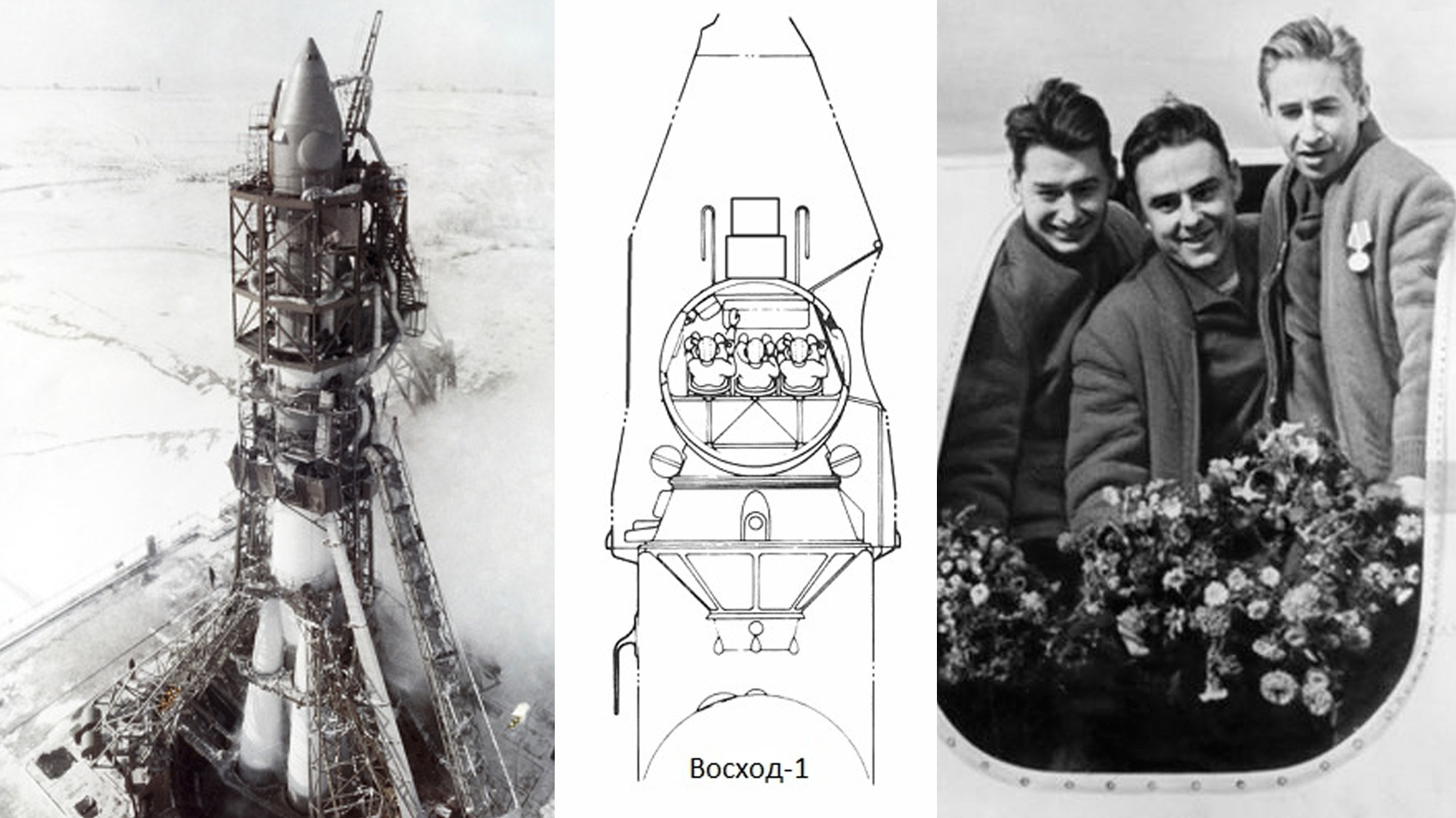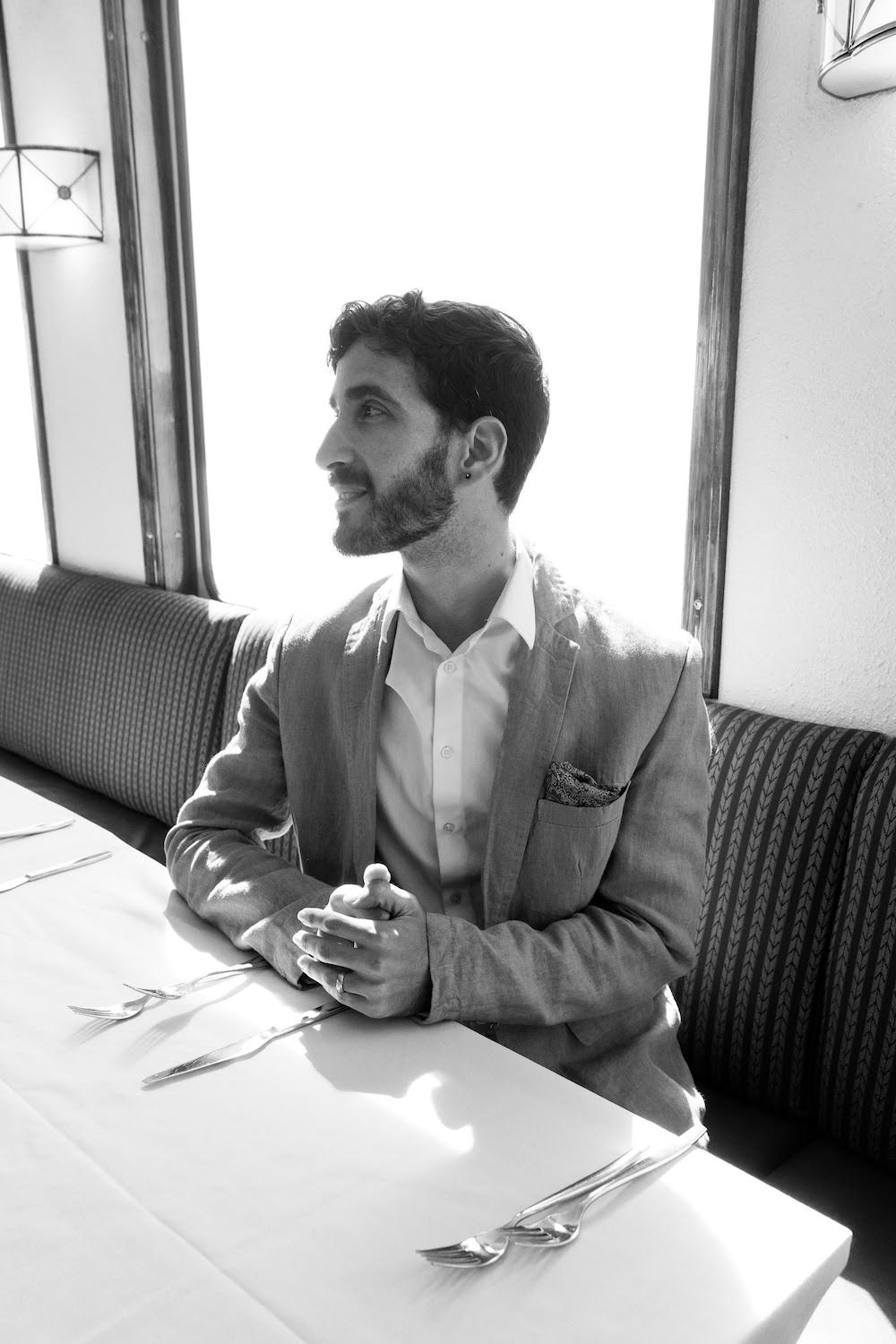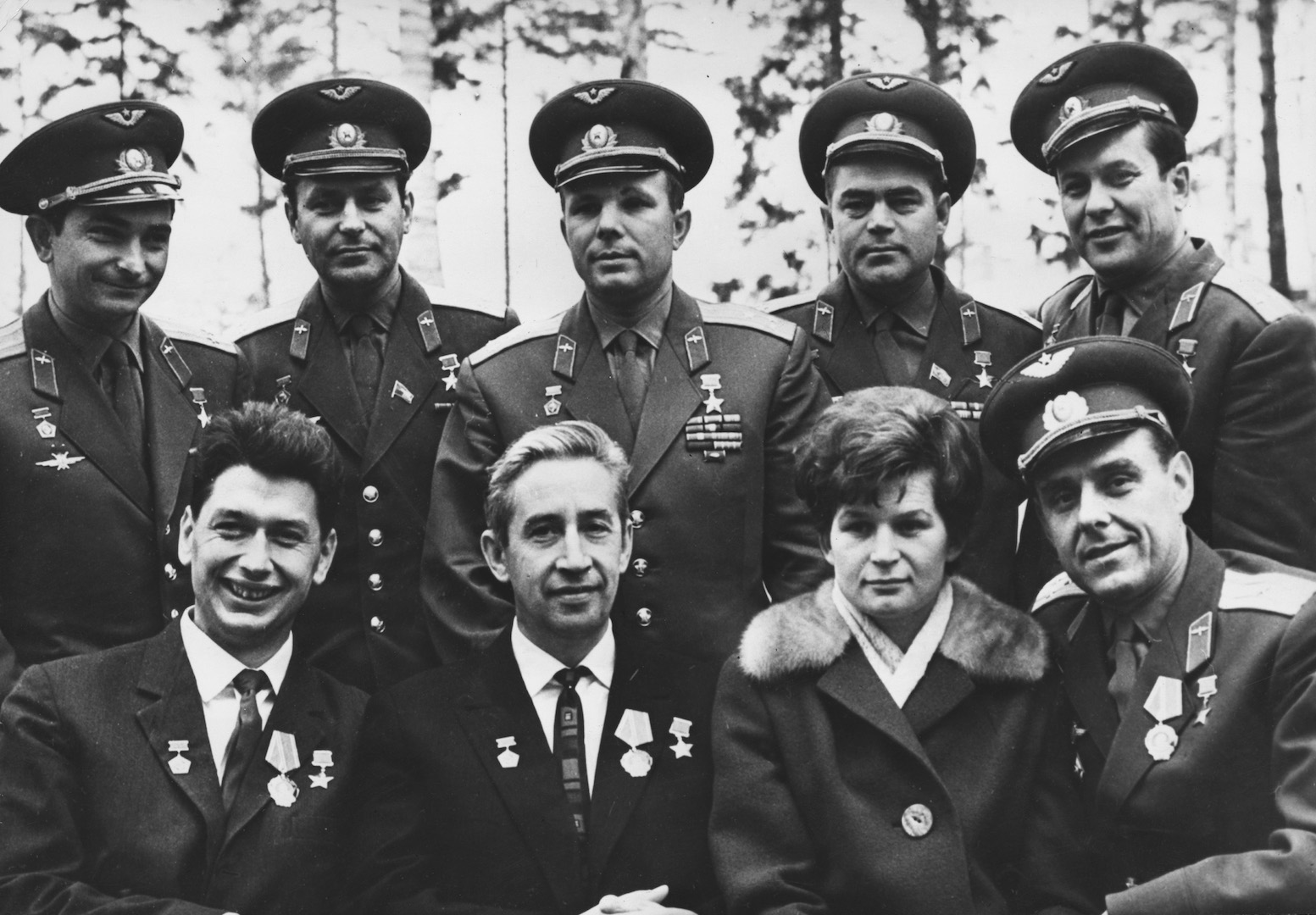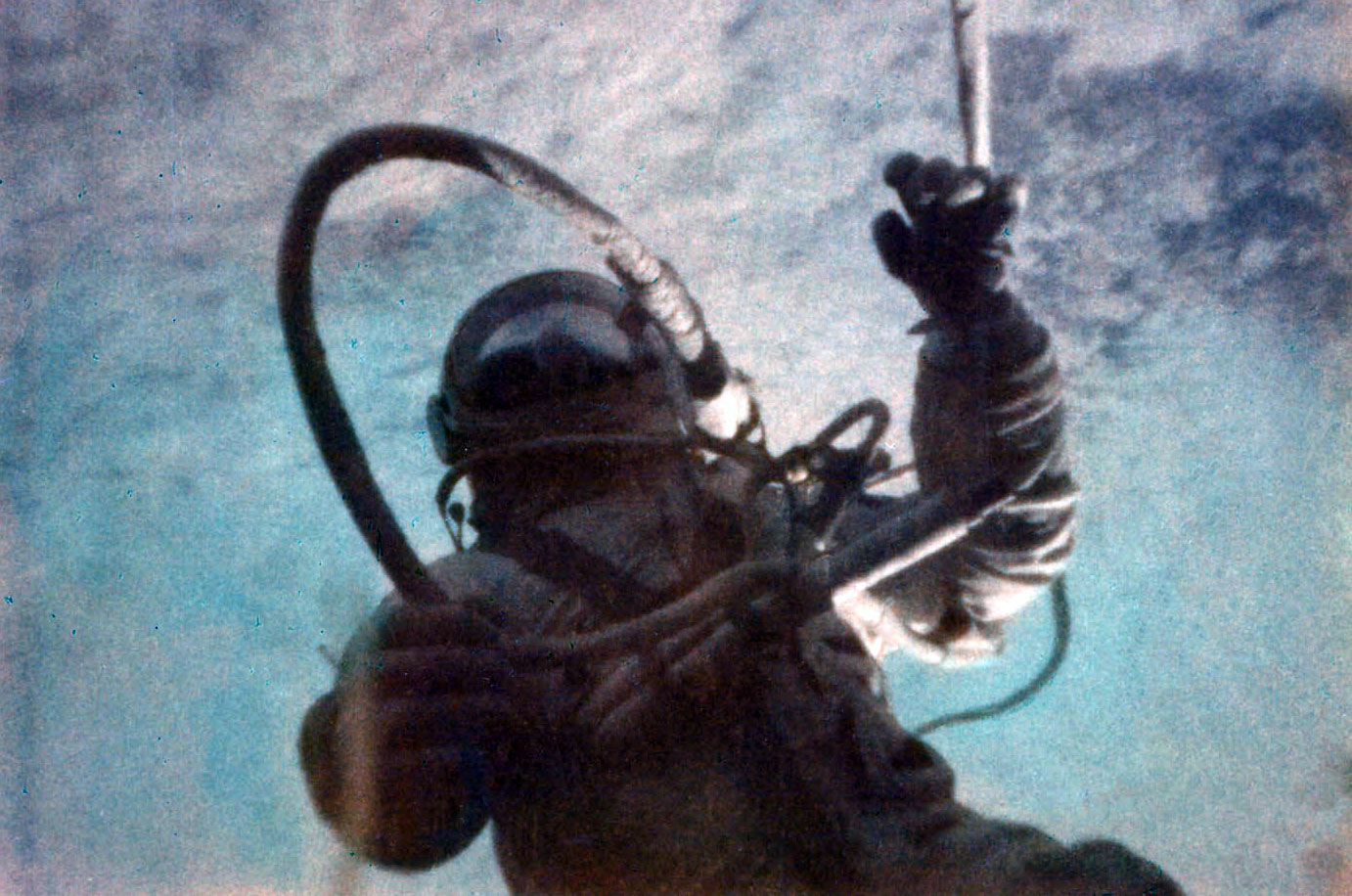Voskhod program: The Soviet Union's first crewed space program

The Voskhod spacecraft was a vehicle used by the Soviet Union during the Cold War space race to carry crews of up to three cosmonauts. Though it only flew two missions, Voskhod (which means "sunrise" in Russian) achieved major milestones with each flight: Bringing the first multi-person crew into space and helping carry out the first spacewalk in history.
The USSR's Voskhod program was the country's second human spaceflight project, following the earlier successes of the Vostok program, which ran from 1960 to 1963 and took single-person crews into orbit. In June 1963, architect of the Soviet spaceflight program Sergei Korolev proposed four more missions under Vostok that would have added new capabilities, such as improved guidance systems and eventually, two-person crews, according to a NASA spaceflight paper by historian Asif Siddiqi.
Around the same time, the United States was readying its second human spaceflight program, the two-person Gemini missions, which had the potential to leapfrog Vostok in size and abilities. Spurred by the possibility of falling behind in the space race, "Soviet leader [Nikita] Khrushchev contacted Korolev and ordered him to convert the Vostok spacecraft into a vehicle capable of carrying not two, but three cosmonauts," Siddiqi wrote.
Related: Are we really in a new space race with China and Russia?
The Soviet's risky race into space
While there is some historical evidence to suggest that it was a Communist Party leader other than Khruschev who gave the order, or possibly even Korolev himself who decided to undertake the bold action, the end result was a mission widely considered rushed and potentially dangerous. The website RussianSpaceWeb.com, an independently-run site dedicated to Russian space history and news, declares the first Voskhod launch the "riskiest mission ever!"
That's because the Voskhod vehicle was a slightly modified version of the previous Vostok spaceship, which had a cramped cabin that was only about 8 feet (2.5 meters) in diameter and made to hold a single cosmonaut. In order to accommodate three people, designers removed the craft's bulky ejection seat used in case of emergencies, meaning the crew would have no chance of escaping the vehicle in case something went wrong during or shortly after launch, according to RussianSpaceWeb.com.
Furthermore, the three cosmonauts onboard the first Voskhod mission — Konstantin Feoktistov, Vladimir Komarov and Boris Yegorov — didn't have enough room in the compartment to wear spacesuits during their flight. A tiny leak while the spacecraft was in space might have meant certain death.
Breaking space news, the latest updates on rocket launches, skywatching events and more!
Voskhod 1
Despite the safety concerns, the USSR managed to beat the Americans and launch the world's first crew into orbit on Voskhod 1 on Oct. 12, 1964 (NASA's Gemini program achieved this distinction months later, in March of 1965). To propel the heavier payload, the Soviets used a more powerful booster than the one for the prior Vostok missions, with an upper stage borrowed from the 8K78 (Molniya) launch vehicle originally designed for deep space missions, according to RussianSpaceWeb.com.
Feoktistov reportedly had doubts about the rocket's capabilities as the cosmonauts waited for liftoff, but the launch proceeded flawlessly and the Voskhod spacecraft was released into orbit for its first flight at 10:30 a.m. Moscow time.
The cramped conditions inside the cabinet made for some challenges for the crew, but they managed to conduct experiments on the behavior of gases and liquids in microgravity, take several hundred photos of the Earth, and were treated to a showing of the aurora borealis during their one-day mission, according to RussianSpaceWeb.com.
Related: Where to see the northern lights: 2020 aurora borealis guide
During the course of the Voskhod 1 flight, the Soviet Union experienced a bloodless coup. While on vacation in Crimea, Khrushchev first realized there was a problem with his position as leader when he didn't receive a phone call containing customary details about the Voskhod launch.
While Krushchev was away, Leonid Brezhnev had secretly taken over power in the USSR and Khrushchev was dismissed forever from public view. Feoktistov wrote in his memoirs that "naive Khrushchev forgot that a dictator can not afford to relax his grip over the police, army and his associates even for a minute," according to Russianspaceweb.com.
The crew of Voskhod 1 landed 24 hours and 17 minutes after launching, on Oct. 13, northeast of the city of Kostanay in Kazakhstan. The spacecraft used parachutes to slow down and reach the ground slowly — an improvement over the earlier Vostok landings, which involved cosmonauts ejecting far above the ground and parachuting down themselves.
Feoktistov reported that the landing was not quite as soft as it could have been, writing that "sparks were flying from [the cosmonauts'] eyes." After touching down, the capsule rolled over so that the three cosmonauts were hanging from their seat belts from the ceiling. The somewhat bewildered crew received a congratulatory phone call from new leader Brezhnev, followed by a parade in Moscow's iconic Red Square.
Voskhod 2
The second and final Voskhod mission, Voskhod 2, occurred on March 18, 1965 and carried cosmonauts Pavel Belyayev and Alexey Leonov. It also included an inflatable airlock called Volga that allowed for the world's first spacewalk, according to Russianspaceweb.com.
Immediately upon reaching orbit, preparations for the event began. The collapsible airlock was inflated and after donning his spacesuit, Leonov climbed inside. About an hour and a half after liftoff, Leonov became the first human to float alone in space. "I am on the edge of the airlock," Leonov said as he stepped outside. "I am feeling great, see clouds below and sea."
Few images exist of the historic occasion. Leonov carried a video camera but he accidentally tossed it away, then watched it disappear into the distance. He snaked himself out to the end of his 16-foot (5 m) tether several times and even banged his hand against the side of the spacecraft, producing sounds inside that Belyaev was able to hear.
After 10 minutes, Leonov felt his hands slip from the gloves of his spacesuit, which began to grow overinflated and deformed. The pressure difference between the air in his spacesuit and the vacuum of space expanded his suit. He became concerned, his heartbeat racing and sweat beginning to fill his spacesuit up to his ankles, as he tried to unsuccessfully reenter the airlock feet first. He finally made the risky decision to open a valve in his suit to release some of the air, allowing him to make it back inside just as the spacecraft slipped over to the Earth's night side.
Related: EVA at 50: Cosmonaut Alexei Leonov took 1st spacewalk 50 years ago
On March 19, as the two-man crew was returning to Earth, the spacecraft's onboard computer malfunctioned and caused them to land 600 miles off-target in a frozen forest in northern Russia, according to the New Mexico Museum of Space History. Rescue crews were unable to reach the stranded men for two days. Helicopters dropped emergency supplies for the cosmonauts, who lacked winter clothes or gear. Finally, on March 21, rescuers reached Leonov and Belyaev, after trekking 5.5 miles (9 kilometers) with snow up to their chests. The cosmonauts received their customary parade in Red Square afterwards.
The Voskhod program was succeeded by the Soviet Soyuz program, which started carrying three-person crews in 1967, and has remained Russia's means of transporting humans into space ever since.
Additional links:
- Learn more about similarities between the Gemini and Voskhod programs, from NASA headquarters.
- Read more about the Voskhod program, from the Royal Air Force Museum.
- Watch footage from the first spacewalk, from the Smithsonian National Air and Space Museum.

Adam Mann is a journalist specializing in astronomy and physics stories. His work has appeared in the New York Times, New Yorker, Wall Street Journal, Wired, Nature, Science, and many other places. He lives in Oakland, California, where he enjoys riding his bike. Follow him on Twitter @adamspacemann or visit his website at https://www.adamspacemann.com/.


